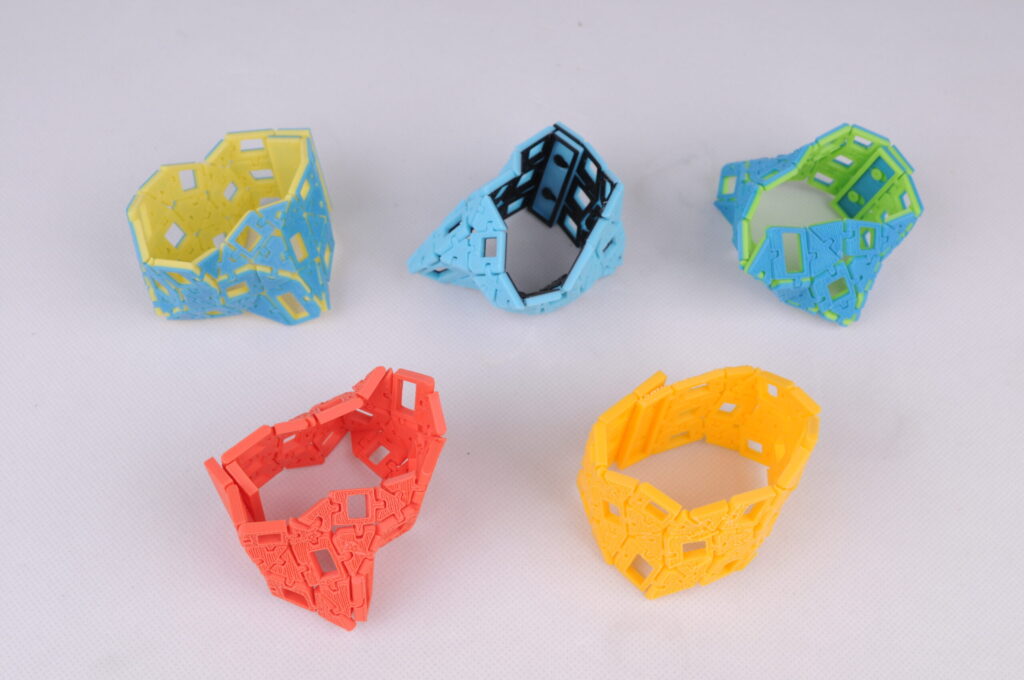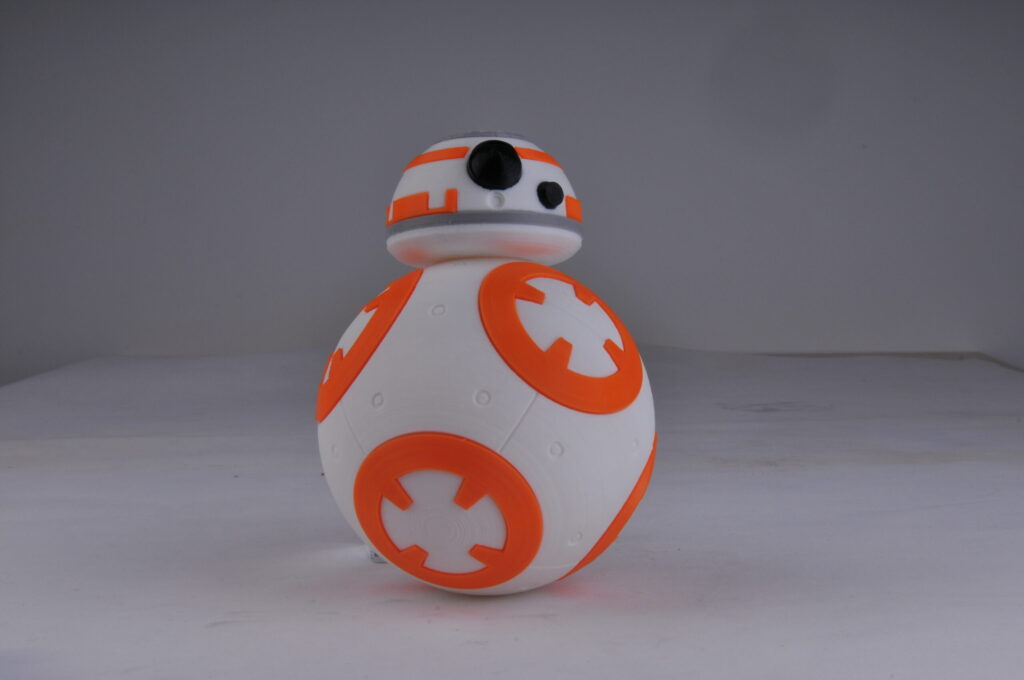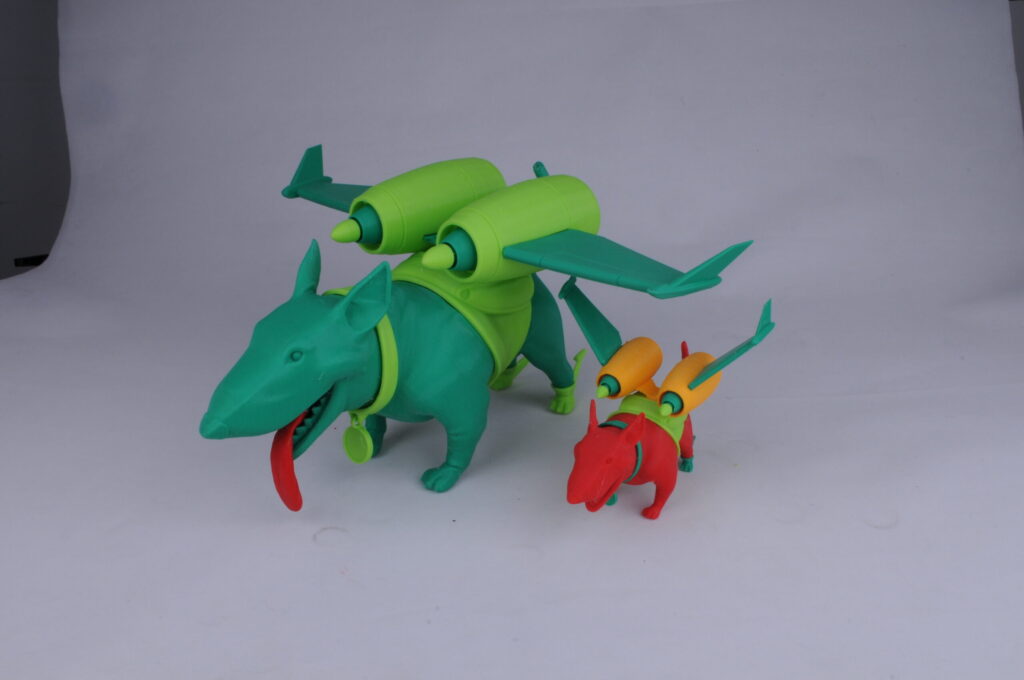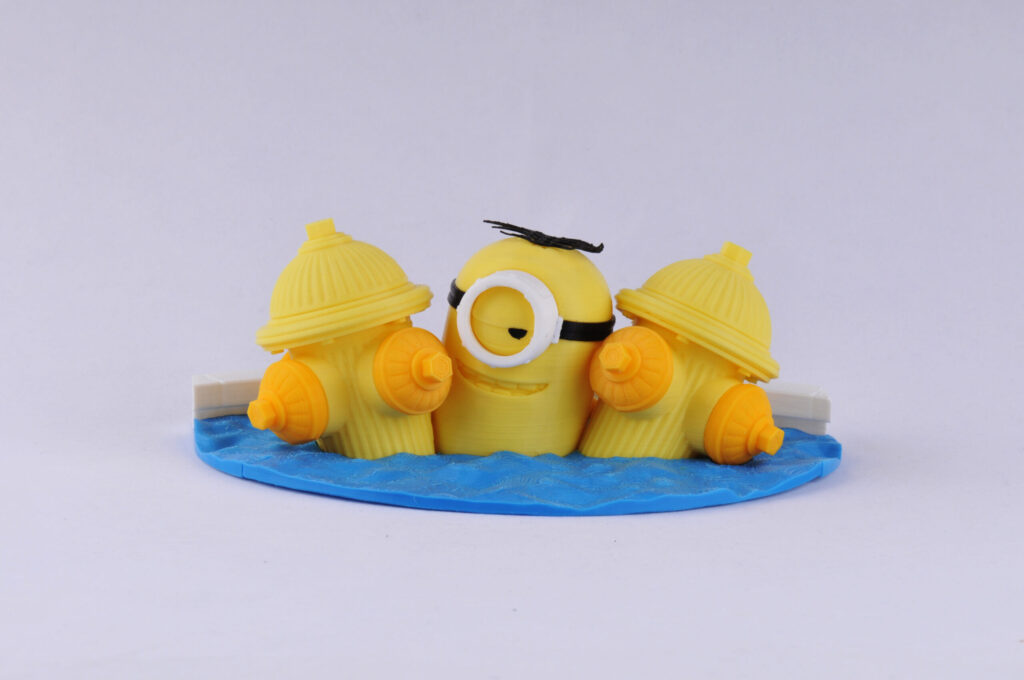
Acrylonitrile butadiene styrene (ABS) plastic is made from oil-based resources and is known for its impact resistance and toughness. Compared to PLA, ABS has a much higher melting temperature. Due to its higher melting point, ABS has to be printed at a higher temperature of around 240 to 260 degrees Celsius at nozzle temperature.
Polylactic acid (PLA) plastic is created from renewable resources, such as corn starch, tapioca roots or sugarcane. It is biodegradable and is widely used in packaging for items like food products. PLA is more brittle than ABS and due to its biodegradability PLA components have a shorter lifespan than ABS when subjected to harsher conditions. PLA is slightly easier to print with than ABS due to its lower print temperature and its ability to print on and stick onto an unheated print platform. Additionally, PLA filament can print at higher speeds.

Both ABS and PLA can produce dimensionally accurate parts and most people would have trouble distinguishing the better print. But ABS’s biggest disadvantage when it comes to print quality is its tendency to curl and warp at the bottom, or even sometimes in the middle of the print. ABS also has more trouble when it comes to finer details like sharp corners, which will often be printed with a slight rounded edge. To improve ABS prints, many people use a method of bathing their prints in an Acetone bath or Acetone vapour. This smooth’s out the print lines and gives a glossy, shiny appearance. Compared to ABS, PLA exhibits much less print warping. Because it undergoes more of a phase-change than ABS, it can also print much finer details. Active cooling enables PLA to print much sharper corners without the risk of curling, warping and cracking. PLA can also be printer at a higher flow rate, which leads to stronger over layer bonds. ABS components are still stronger due to the plastic’s mechanical properties.

ABS – plastic is made up of three main components which release tiny particles into the environment when heated. These particles can be potentially harmful to those breathing them in.
PLA – Because PLA is made from natural materials such corn it does not release the same sort of toxic smell that ABS emits.

Both ABS and PLA absorb moisture from the air if they are not stored properly. However your filament is not going to be ruined in a couple of days and moisture can be removed by drying it with the likes of a food dehydrator or oven. Preventing moisture absorption can be achieved by placing you filament in a sealed container or bag.

